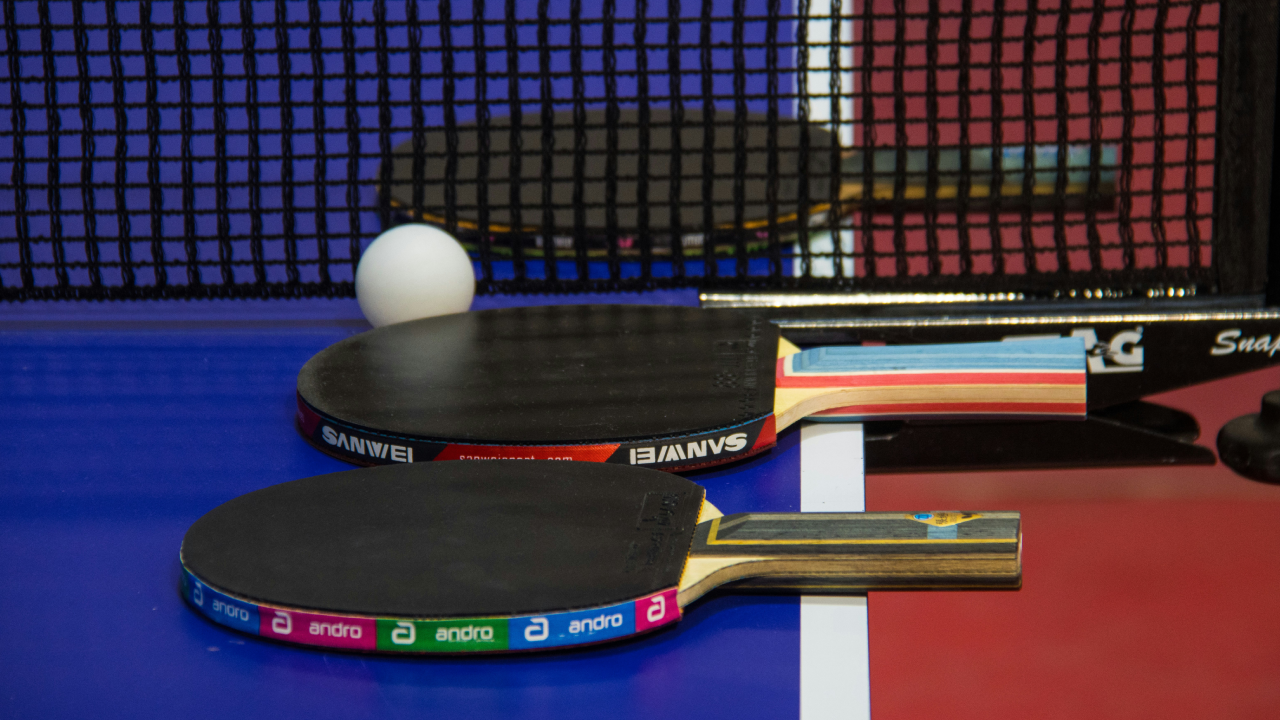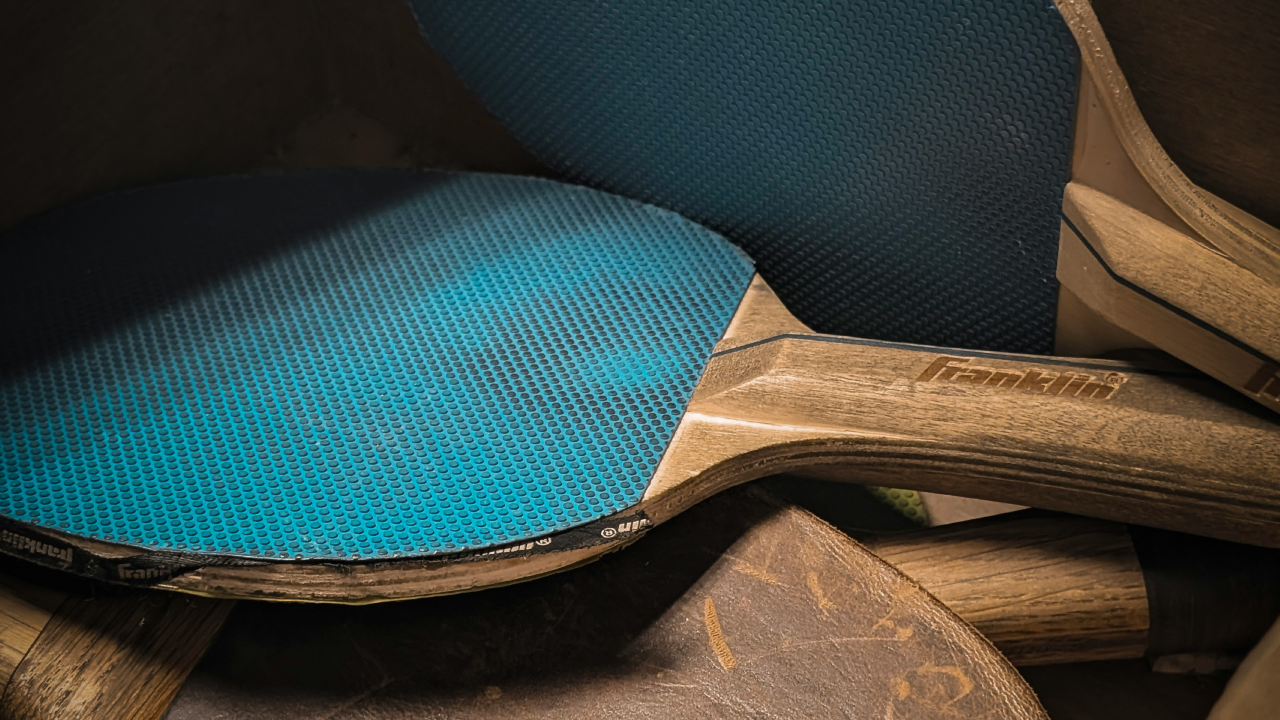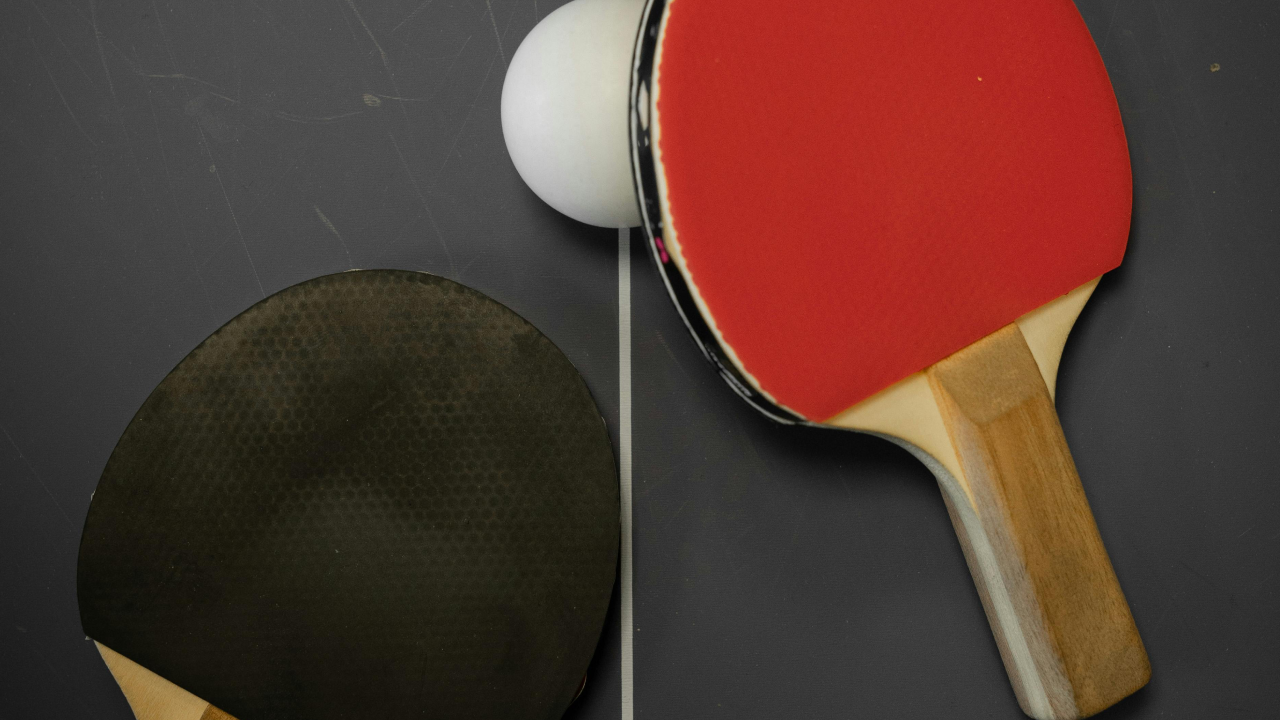Ping pong, also known as table tennis, is one of the most popular sports globally, enjoyed by millions of players at all levels. Whether you’re a casual player or a professional athlete, one essential piece of equipment that can make a significant difference in your game is the ping pong paddle.
Understanding the different types of paddles, their materials, construction, and how to choose the right one for your style of play can significantly impact your performance at the table.
Table of Contents
Anatomy of a Ping Pong Paddle
To understand ping pong paddles, it’s essential to know their basic structure. A standard paddle consists of three primary parts: the blade, the sponge, and the rubber. Each of these components contributes to how the paddle performs and feels during a game.
- Blade: The blade is the wooden core of the paddle. It is typically made from five or seven layers of wood, though carbon or other materials can be used to enhance speed and stiffness. The type of wood and layers affect the paddle’s weight, speed, and control. A thicker blade usually adds power, while a thinner blade offers better control.
- Sponge: Between the blade and the rubber lies the sponge. The sponge thickness can vary from 1.0 mm to 2.5 mm. A thicker sponge provides more speed and power but sacrifices some control, while a thinner sponge gives more control but less speed. Players must choose the thickness based on their playing style.
- Rubber: The rubber layer is the outermost part of the paddle, which comes into contact with the ball. Different rubbers offer varying degrees of spin, speed, and control. Some rubbers are designed for defensive play, while others are intended for aggressive, spin-heavy games. There are two main types of rubber: smooth (pimple-in) and pimpled (pimple-out), each offering different performance characteristics.
Types of Ping Pong Paddles
The type of ping pong paddle you choose depends on your playing style and level of experience. Let’s break down the most common types of paddles available.

a. Control Paddles
Control paddles are designed for beginners or players who prefer a more defensive style. These paddles offer a balance of speed, spin, and control, making them ideal for players still developing their skills. The rubber on control paddles tends to be less tacky, allowing for better ball handling and minimizing errors caused by over-hitting.
b. Offensive Paddles
Offensive paddles are built for players who rely on aggressive, fast-paced play. These paddles typically have thicker sponges and faster rubbers, providing more power and speed. Offensive paddles sacrifice some control but make up for it with their ability to produce high-speed shots and heavy topspin, making them perfect for advanced players who want to dominate rallies.
c. All-Around Paddles
All-around paddles are suitable for players who like to mix both offensive and defensive strategies. These paddles strike a balance between speed and control, making them versatile for various playing styles. Many intermediate players opt for all-around paddles as they allow more flexibility in adapting to different opponents.
Paddle Grip Types
Another important consideration when choosing a ping pong paddle is the grip. How you hold the paddle can significantly affect your playing style and overall performance. There are two main types of grips:
Shakehand Grip
The shakehand grip is the most common grip in table tennis, especially in Western countries. As the name suggests, the player holds the paddle as if shaking hands with it, allowing for a more versatile range of motion. Players using the shakehand grip tend to have a more balanced style, allowing them to easily switch between offensive and defensive plays. Most paddles are designed to cater to this grip.
Penhold Grip
The penhold grip is popular in Asian countries and is named because it resembles the way one holds a pen. Players using this grip have their index finger wrapped around the handle while the other fingers curl around the back of the paddle. The penhold grip is known for providing excellent wrist mobility, making it easier to generate spin and perform quick, deceptive strokes.
Rubber Types: Pips-In vs. Pips-Out

The rubber on a ping pong paddle significantly influences its playing characteristics, especially in terms of spin, speed, and control. There are two primary types of rubber: pips-in and pips-out.
Pips-In Rubber (Inverted)
Pips-in or inverted rubber is the most common type of rubber found on paddles. This type has the pips (tiny protrusions on the rubber) facing inward, meaning the smooth side is the hitting surface. Inverted rubber offers excellent spin generation and control, making it ideal for players who rely on topspin, loops, and spin-heavy serves.
Pips-Out Rubber
Pips-out rubber has the pips facing outward, making the surface slightly rougher. This type of rubber can be further divided into short pips and long pips. Short pips are used for fast, flat hits, while long pips are excellent for defensive play, allowing players to return spin-heavy shots with minimal effort.
- Short Pips: These are best for players who prefer fast, direct hits. Short pips create less spin than inverted rubber but are great for blocking and counter-attacking.
- Long Pips: Long pips are ideal for defensive players who focus on disrupting their opponent’s rhythm. The longer pips help neutralize spin and make it difficult for opponents to predict the ball’s trajectory.
Choosing the Right Paddle for Your Playing Style
When selecting a ping pong paddle, it’s essential to consider your playing style. A paddle suited to your game will enhance your strengths and help you develop in areas where you may need improvement. Here’s a brief guide to choosing a paddle based on your playing style:

For Beginners
As a beginner, it’s best to focus on control. Look for a paddle with a thinner sponge (around 1.5 mm to 1.8 mm) and a softer rubber, which will allow you to handle the ball more easily. Control paddles help you learn proper technique, ball placement, and stroke consistency before moving on to more advanced equipment.
For Intermediate Players
If you’re an intermediate player, consider an all-around paddle with a sponge thickness of about 2.0 mm. This allows a balance of control and speed, giving you more flexibility in your game. At this stage, you might want to experiment with different rubber types (pips-in vs. pips-out) to find what suits your gameplay best.
For Advanced Players
Advanced players usually opt for offensive paddles with thicker sponges (2.1 mm or thicker) and tackier rubbers for maximum spin and power. The choice of blade material, such as carbon, can also enhance speed and stiffness. Professional players often customize their paddles to suit their specific playing style.
Maintaining Your Ping Pong Paddle
Proper maintenance is essential to ensure your paddle lasts long and performs at its best. Over time, dirt, dust, and oils from your hands can accumulate on the rubber, reducing its effectiveness. Here are some tips for maintaining your paddle:
- Clean the Rubber Regularly: After every game or practice session, wipe down the rubber with a damp cloth or specialized rubber cleaner to remove dirt and sweat.
- Use a Paddle Cover: Invest in a paddle cover to protect your paddle from dust and damage when not in use. This will help prolong the life of the rubber.
- Store in a Cool, Dry Place: Extreme temperatures and humidity can damage both the rubber and the wood. Store your paddle in a dry, cool environment to avoid warping or degradation.
